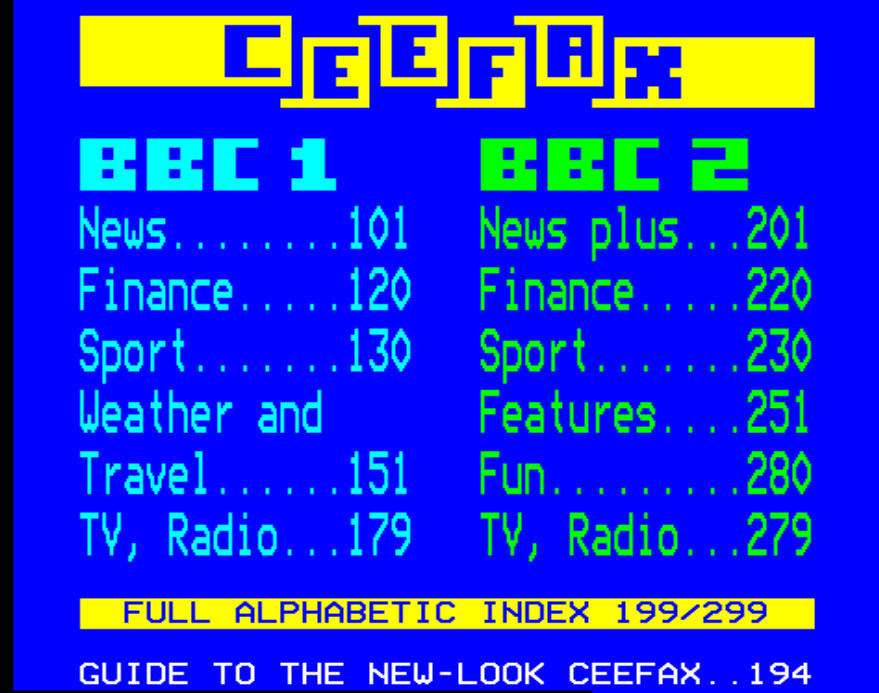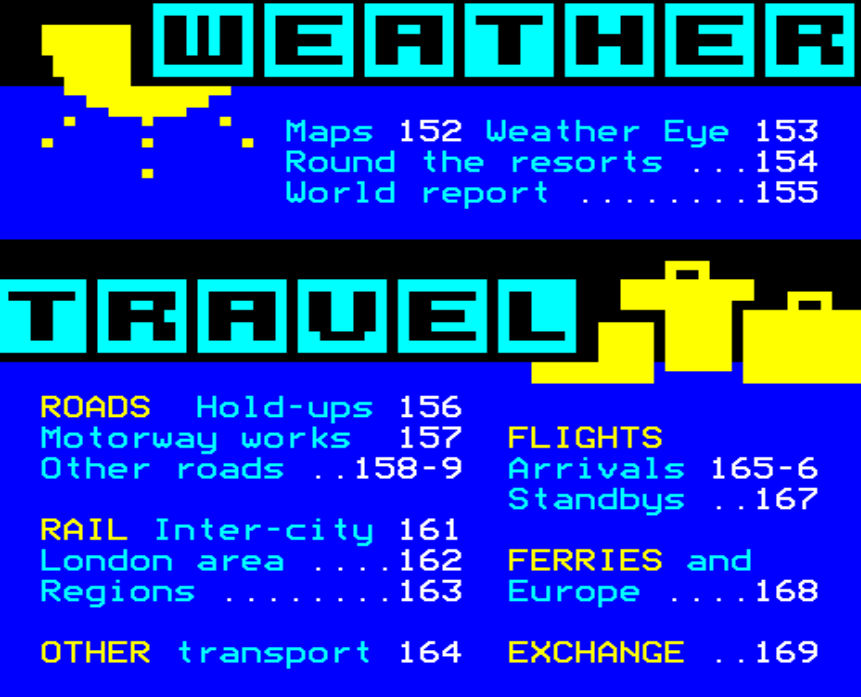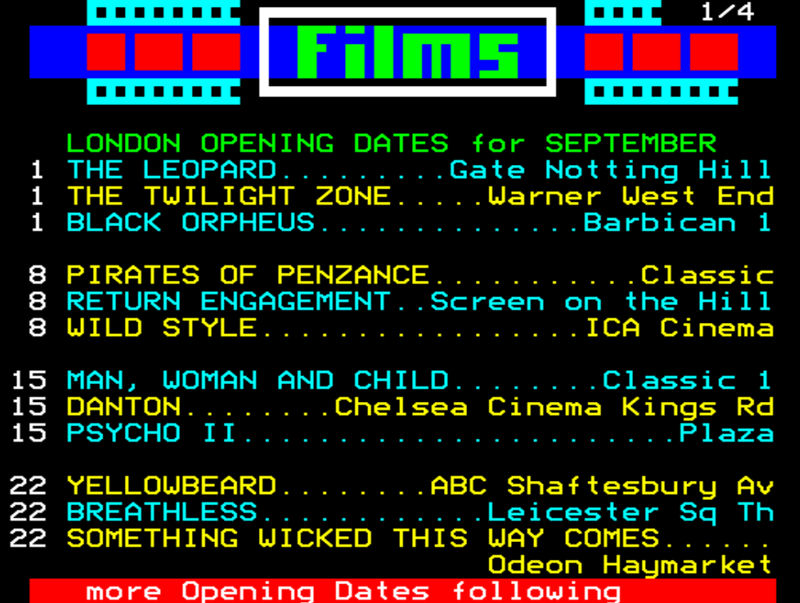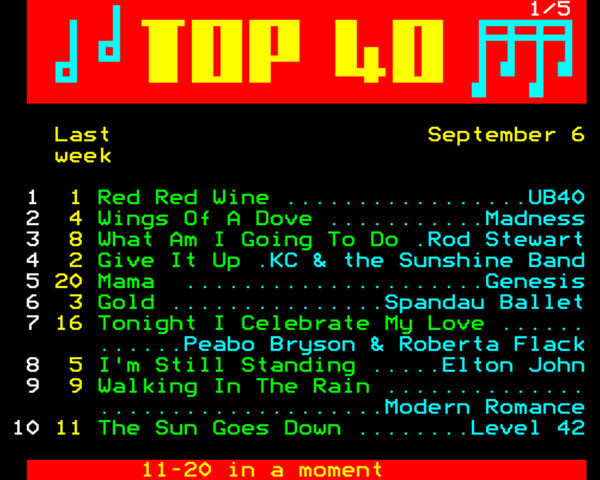Teletext, pioneered by the BBC in the 1970s, was a novel way of broadcasting "printed" information via TV. The BBC's engineers realised that spare capacity in the 625-line analogue TV signal could be used to carry extra information in digital form which could be displayed, in addition to the usual TV picture, with the aid of a special decoder. BBC Ceefax was formed to exploit this technology and a team of journalists and researchers headed by Colin McIntyre built up a service of news and information of all kinds. It was in some ways a forerunner of the web in that viewers could dial up the information they needed and have it displayed on the TV screen almost instantly (barring reception problems). The service became so successful that teletext decoders eventually became a standard feature in all TV sets manufactured in the UK. ITV had its own version of teletext -


Examples of Ceefax pages, showing the range of information available
called Oracle until a new company won the teletext licence in 1991 and hijacked the generic term to call itself Teletext. Broadcasters throughout Europe and some in the United States adopted the technology - and some still use it. For Ceefax, the end came with the demise of analogue TV broadcasting in the UK. There is still a BBC text service "on the Red Button" but the format is quite different and perhaps less appealing to those with fond memories of being able to key in a number on the remote to obtain a specific page - a newsflash, for example, or the latest Test scores, or a weather map - or even the price of fish! An important legacy of teletext is the provision of subtitles for the deaf and hard of hearing, now available on most programmes from the major broadcasters.


Here are some other examples of the use of teletext technology that can be downloaded and run on a BBC computer or emulator on a PC:-